
Capture the taste of summer delicious apricot jam—a bright and delightful spread—perfect for breakfast on toast or muffins. It can also elevate a simple yogurt parfait. Making apricot jam is a great way to preserve the taste of summer throughout the year. Apricots are typically in season from late spring to early summer, but with a batch of homemade apricot jam, you can enjoy their flavor well past their peak. The process is surprisingly simple: just cook the ripe apricots and sugar together until the mixture thickens and becomes spreadable. The natural pectin in the fruit helps the jam to gel, creating a perfect consistency.
All About Apricot Jam: The Spreadable Sunshine in a Jar
Apricot jam isn't just a modern breakfast staple. The concept of preserving fruit with sugar stretches back to ancient times. The Romans, for example, enjoyed a similar concoction made with quinces and honey. Fast forward to the Middle Ages, and sugar became more widely available, paving the way for jams and marmalades closer to what we know today.
The origin of apricot jam specifically is a little murkier. Some believe it arose alongside other fruit preserves in the Middle East and Asia, where apricots originated. There's even a Roman cookbook, compiled by Apicius in the 4th or 5th century AD, that mentions boiling fruit with honey for a sweet spread!
Tips for The Best Apricot Jam
- Use perfectly ripe apricots. Underripe fruit will lack sweetness and pectin, essential for thickening. Overripe apricots can become mushy. Aim for fruit that gives slightly to the touch but isn't soft.
- Sugar plays a dual role in jam-making: preserving and thickening. Don't skimp on the sugar, or your jam might not set properly. Note that sugar substitutes won’t work with this recipe.
- Naturally occurring pectin in fruit helps jam gel. If your apricots are a bit underripe or you prefer a firmer set, consider adding a small amount of commercial pectin according to package directions.
- To check if your jam is done, spoon a small amount onto a chilled plate and place it in the freezer for a few minutes. Push your finger through the cooled jam. If it wrinkles, it's ready! If it remains runny, your jam needs more cooking time.
Can I Add Other Flavors To The Jam?
Yes, you can! Here are some ideas!
Add a split vanilla bean pod during cooking for a touch of floral sweetness.A pinch of cinnamon, ginger, or cardamom can add a warm depth of flavor. A splash of Amaretto or Grand Marnier adds a sophisticated touch (for adults only, of course!).
How Do I Know When The Jam Is Cooked Properly?
The jam is done when it thickens and reaches a spreadable consistency. A good test is the "wrinkled spoon" method. Place a small dollop of jam on a chilled plate and pop it in the freezer for a few minutes. If you can push your finger through the jam and it wrinkles, it's ready! If it remains runny, your jam needs more cooking time.
Can I Use Underripe Apricots For Jam?
It's not ideal. Underripe apricots lack sweetness and pectin, which are important for flavor and thickening. Opt for ripe but not mushy apricots.
My Apricot Jam Isn't Setting! What Can I Do?
There are a few reasons why your jam might not be setting. It could be undercooked, lacking in pectin, or the sugar ratio might be off. Make sure you follow the recipe carefully and cook the jam until it reaches the proper consistency as indicated by a wrinkle test. You can also consider adding a small amount of commercial pectin according to package directions for extra help with setting.
How to Store Apricot Jam
If properly sterilized, the apricot jam can be stored in a cool, dark place for up to a year. Once opened, keep the jam in the fridge for up to one month.
Ingredients
How To Make Apricot Jam
;Resize,width=712;)
Slice the apricots in half and remove the pit.
Slice the apricots in half and remove the pit.
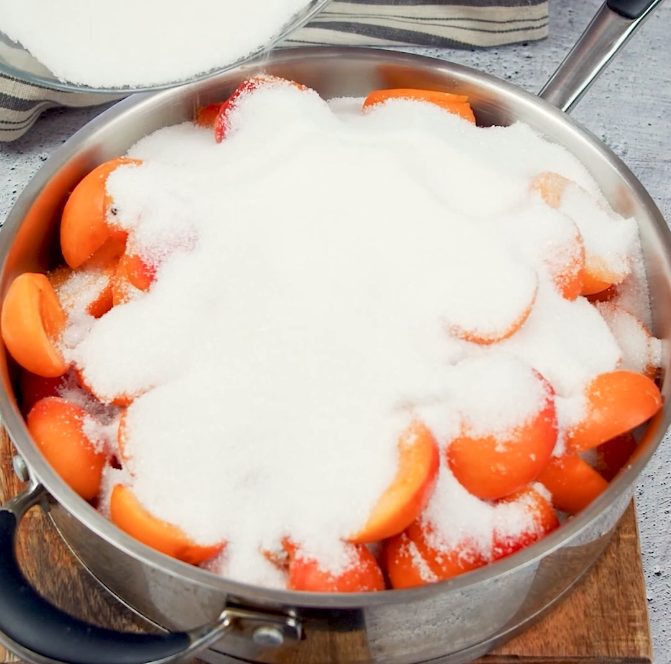;Resize,width=712;)
In a large, heavy-bottomed pot, combine your halved apricots and sugar.
In a large, heavy-bottomed pot, combine your halved apricots and sugar.
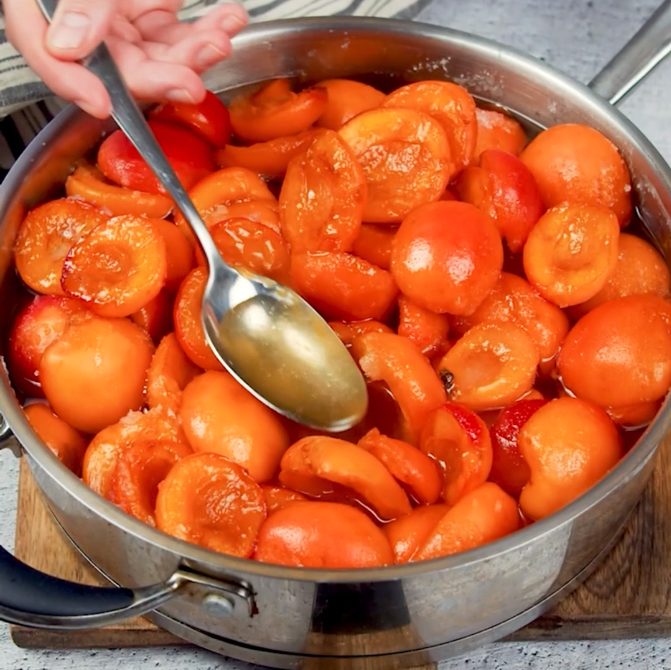;Resize,width=712;)
Let the mixture sit at room temperature for 5 hours. The sugar will draw out the juices from the apricots, creating a natural syrup.
Let the mixture sit at room temperature for 5 hours. The sugar will draw out the juices from the apricots, creating a natural syrup.
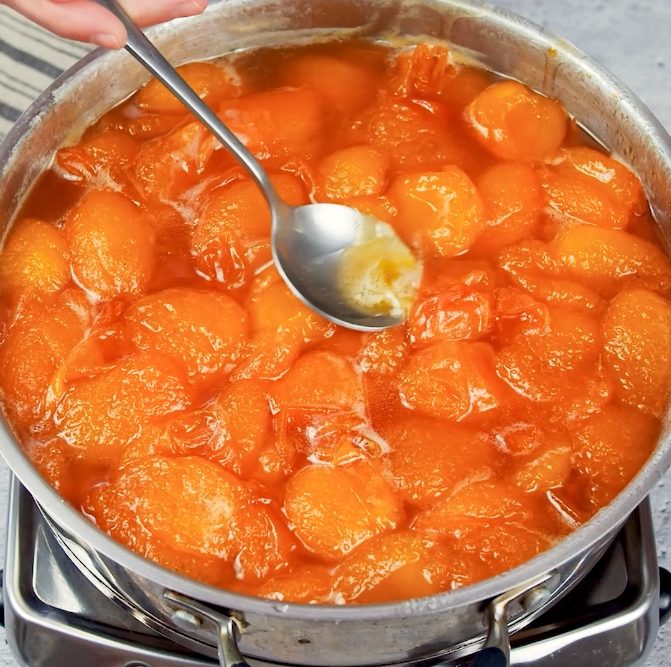;Resize,width=712;)
Place the pot on the stovetop over low heat. Cook the apricot mixture for about an hour, stirring frequently. As the jam cooks, a foamy layer may form on the surface. Simply skim this off with a spoon for a clearer final product.
Place the pot on the stovetop over low heat. Cook the apricot mixture for about an hour, stirring frequently. As the jam cooks, a foamy layer may form on the surface. Simply skim this off with a spoon for a clearer final product.
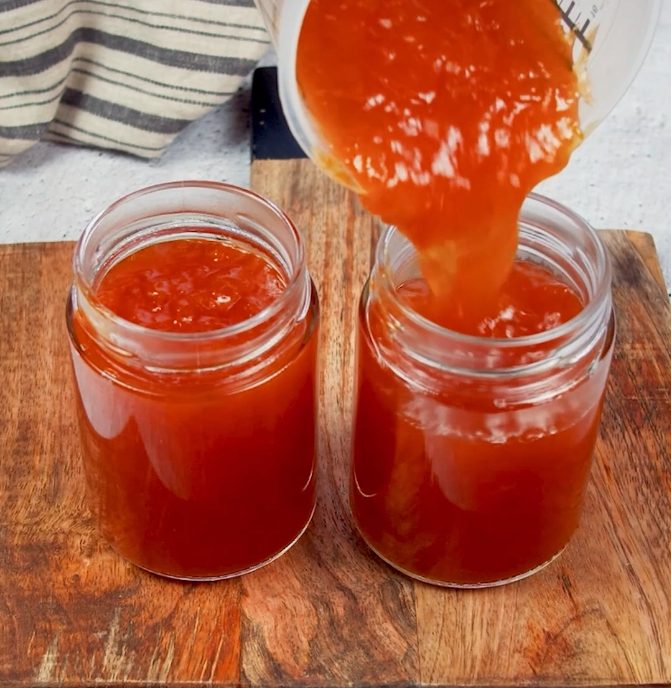;Resize,width=712;)
While your jam simmers, prepare your jars for safe storage. Wash them thoroughly with hot, soapy water, then sterilize them by simmering in boiling water for 10 minutes. Let them dry completely before filling. Carefully ladle the hot jam into your sterilized jars, leaving about ¼ inch of headspace at the top. Wipe the rims clean with a damp cloth, then place the lids on the jars (don't screw them on tightly yet).
While your jam simmers, prepare your jars for safe storage. Wash them thoroughly with hot, soapy water, then sterilize them by simmering in boiling water for 10 minutes. Let them dry completely before filling. Carefully ladle the hot jam into your sterilized jars, leaving about ¼ inch of headspace at the top. Wipe the rims clean with a damp cloth, then place the lids on the jars (don't screw them on tightly yet).
;Resize,width=712;)
For safe storage, process the filled jars in a water bath canner. Place a kitchen towel in the bottom of a large pot and carefully arrange the jars on top. Fill the pot with enough warm water to cover the jars by at least 1 inch. Bring the water to a boil, then process the jars for 15 minutes. Using tongs, carefully remove the jars from the water bath and place them on a wire rack to cool completely. Once cool, check the seals for tightness. Screw on the lids firmly and store the apricot jam in a cool, dark place for up to a year.
For safe storage, process the filled jars in a water bath canner. Place a kitchen towel in the bottom of a large pot and carefully arrange the jars on top. Fill the pot with enough warm water to cover the jars by at least 1 inch. Bring the water to a boil, then process the jars for 15 minutes. Using tongs, carefully remove the jars from the water bath and place them on a wire rack to cool completely. Once cool, check the seals for tightness. Screw on the lids firmly and store the apricot jam in a cool, dark place for up to a year.
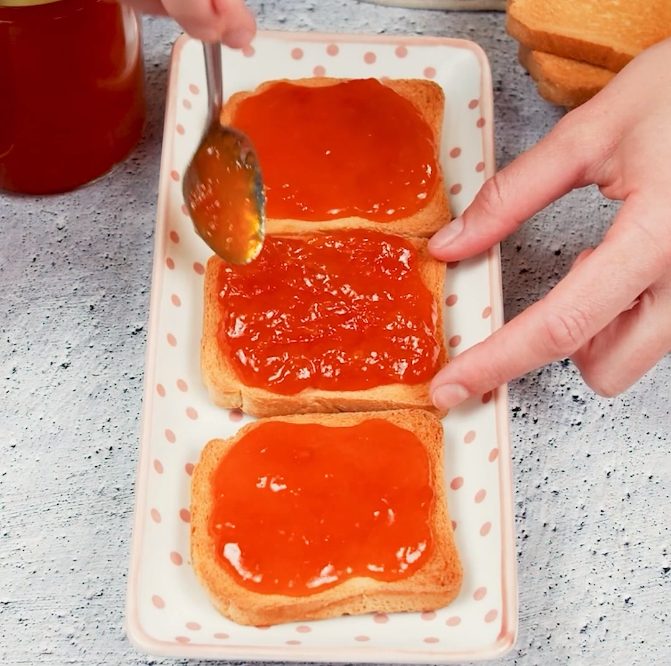;Resize,width=712;)
Serve with a slice of toast.
Serve with a slice of toast.

;Resize,width=767;)
